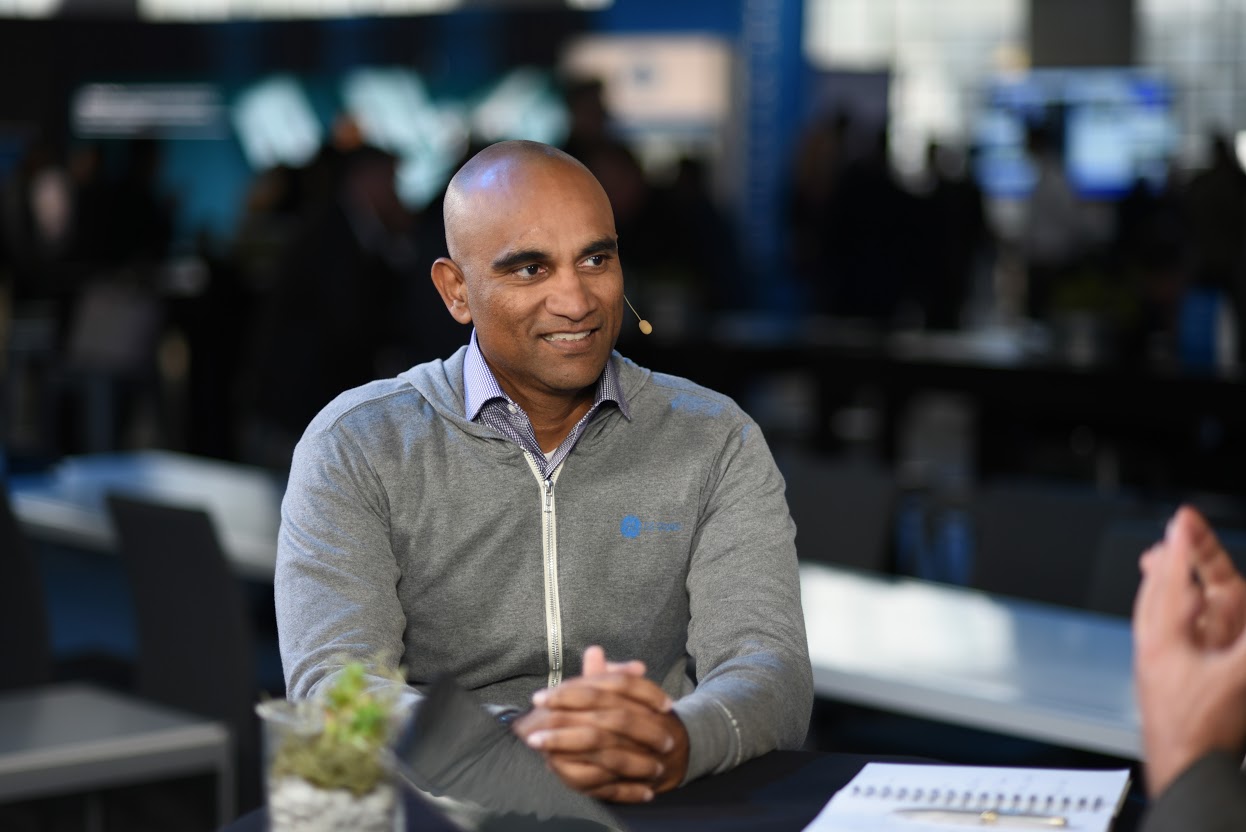 INFRA
INFRA
 INFRA
INFRA
 INFRA
INFRA
General Electric Co. has been on a decades-long journey to the next industrial revolution. Initially it built automated machinery to increase the output and lifecycle of its assets. As the digital transformation flourished, the company expanded the concept with its GE Predix platform as a service. The goal for GE Digital is to optimize the platform across many systems from end-to-end with Internet of Things technology.
While at the GE Minds + Machines event in San Francisco, Jeff Frick (@JeffFrick), host of theCUBE*, from the SiliconANGLE Media team sat down with Hima Mukkamala, head of engineering/senior executive for Predix at GE Digital, to discuss the explosive growth that has been happening since the launch.
This week theCUBE spotlights Hima Mukkamala as our Guest of the Week.
On Feb 28, 2016, GE Predix reached general acceptance, and the new platform as a service became available to the market through open source and partner channels. GE is specifically trying to attract developers to assist in the collection of data from industrial machines, both at the application layer and at the edge of the network.
Since then, the number of developers using the program soared from 1,000 to 19,000. There was also tremendous growth on the partner side as well. At its start, there were no partners, and now there are 250. “A platform is nothing without its partners,” stated Mukkamala.
To promote the expansion of applications and edge analytics, GE Digital is working with the Industrial Internet Consortium and inviting partners, such as Independent Software Vendors, service integrators and the developer community, to join in their Industrial Internet platform.
“Building a platform is a multi-year journey. The digital transformation is a journey; you don’t get [everything] done on day one,” Mukkamala commented. The objective, according to GE, is to create industrial testbeds that incubate innovative technology to accelerate the Industrial Internet.
Mukkamala pointed out that industrial customers are less concerned with the technology aspect and more interested in quicker outcomes. He described GE’s three pillars of delivering outcomes as asset performance management, creating a digital thread and offering field service automation.
Providing Asset Performance Management is integral to machine maintenance and operational processes. GE Digital offers APM from “connectivity to optimization” to help industries elevate performance.
Another way the company is seeking to deliver better results for its customers is through its digital thread. This term refers to taking assets previously isolated and connecting them through sensors to create a seamless flow of information. The goal is to amass vast amounts of data from the connected devices and bring it to the companies “industrial strength cloud and providing real-time analytics to improve performance.”
Lastly, GE is in the business of manufacturing machinery, not servicing it, so it was critical for the company to develop field service automation. The GE Digital acquisition of ServiceMax last week is an investment the company is making to provide field service to manage customer assets to improve productivity and efficiency.
Since platform adoption comes from the applications, appealing to developers is essential. GE Predix offers a few enticing aspects for developers. They can use the open-source platform to solve significant problems. “Developers want to make something that matters,” Mukkamala revealed. “GE provides developers with the ability to target use cases and have use cases that they can build on that make that impact.”
GE Digital is solving significant problems and taking on industrial-sized challenges. As a result, the Predix platform is how the company is building an edge infrastructure to collect data at the edge, which Mukkamala acknowledged is the right way.
A big part of industrial machine learning has become the digital twin. “The basic offering is a combination of the virtual model of the asset, the analytics that can operate on the asset and the data from the asset to make business decisions … doing it at scale and giving the ability to the customer,” explained Mukkamala.
Most noteworthy is that GE is doubling down and making further investments in technology, such as digital twins, graph engine for vast amounts of data, standardizing models, an edge-to-cloud platform and security for the whole system. If the company gets it right, it will be the leader in the second industrial revolution.
Watch the complete video interview below, and be sure to check out more of SiliconANGLE and theCUBE’s coverage of GE Minds + Machines. (*Disclosure: TheCUBE was a paid media partner at the conference. Neither GE nor other sponsors have editorial influence on content produced by theCUBE or SiliconANGLE.)
THANK YOU